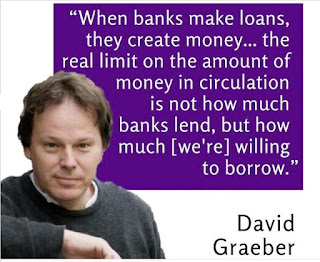That’s in his article entitled “Why can’t we have hypothecated savings, provided by the government?”
Richard Murphy basically supports MMT, but he disagrees with the MMT claim that government borrowing is pointless. Incidentally Milton supported the “no government borrowing” idea (though of course MMT was not up and running in Friedman’s day).
Richard Murphy lists three reasons for his claim, though as shown below, he actually gives four. His first reason is that since government should keep interest rates “as low as possible”, government “needs to influence markets to achieve that goal”.
Well the flaw in that argument is that if government switches from a pure MMT policy of “borrow nothing” to “borrow something”, that inevitably RAISES interest rates. And that conflicts with his aim of keeping interest rates “as low as possible”!!
Murphy’s second and third reason.
His second reason is even more bizarre. His argument is that saving by households inevitably happens.
So?
He doesn’t explain exactly WHY the fact of individual people and households saving means its desirable for government to borrow, so it’s a bit difficult to deal with his “reasoning” there: the “reasoning” doesn’t exist!
And his third reason is that lending to government can result in what he calls “social investment”. Well it’s obviously true that it can. But it’s false logic to claim (as he is presumably trying to) that if there is NO GOVERNMENT BORROWING, that therefor “social investment” is somehow constrained. I.e. the reality is that if government obtains 100% of its money from tax and freshly printed money, rather than from borrowing, it can allocate whatever proportion of that money to investment that it likes.
He also tries, with a view to boosting the apparent attractions of “social investments” to rubbish alternative forms of saving. That is he claims that money put into “shares or second-hand properties” amounts to boosting “speculative bubbles”.
Well there’s no denying that stock exchange bubbles and house price bubbles DO OCCUR. But it’s going way too far to suggest that ALL MONEY put into those assets is wasted for that reason. A large majority of houses that families buy are “second –hand properties”. Are those families doing something wrong?
The fourth reason.
His fourth reason (para starting “What I mean…”) is that there is a natural desire to save by households, ergo government should provide an interest yielding form of saving for those people. The answer to that idea is as follows.
The free market, left to its own devices, will provide a large volume and range of types of saving: e.g. the above mentioned shares and houses. And unless there is an obvious reason for thinking the market has got it wrong, that total amount of saving opportunities is presumably the optimum amount.
But that is not to argue that government should provide NO FORM OF SAVING WHATEVER for households and the private sector in general. That is, every economy (other than very primitive economies, e.g. in unexplored parts of the Amazon jungle) needs a form of money. And nowadays that money takes the form of FIAT money, rather than gold coins etc. Plus that form of fiat money is necessarily issued by some form of central / communal / government organisation. Fed issued US dollars are an example.
In short, the basic purpose of government / central bank issued fiat money is to enable firms, households etc to do business, e.g. do their weekly purchase of groceries. That’s the “transaction motive” for wanting money mentioned in economics text books. But that form of money cannot help but be a form of saving, though there is no obvious reason to pay interest to holders of that money: indeed it would be perfectly reasonable to ACTUALLY CHARGE them for the costs involved in issuing that money and running the accounts of households which have a stock of that form of money.
Moreover, governments are ACTUALLY FORCED to issue more of that money than is needed for the above “do business” reason. That is, if firms and households decide to keep a stock of that money OVER AND ABOVE what they need for the “do business” reason, governments are forced to provide firms and households with that money. That pretty much equals the “precautionary motive” for wanting money mentioned in the text books. If government DOES NOT provide “precautionary money”, firms and households will try to SAVE in order to accumulate their desired holding of it, and the result will be excess unemployment (Keynes’s “paradox of thrift” unemployment).
To summarise, government HAS TO provide a form of saving for the private sector in the form of zero interest yielding state issued money. But if (as per Richard Murphy) savers are induced to engage in MORE THAN that form of saving via a positive rate of interest being offered for that form of saving, then the bill for that largess is necessarily paid by NON SAVERS. I.e. to a significant extent that amounts to robbing the poor to subsidise the rich: not a clever policy.
Conclusion.
I’m not claiming to have said the last word on this subject: in fact I think it’s a difficult and complicated area. But one thing is certain: Richard Murphy’s above arguments are poor in the extreme. He needs to go back to the drawing board.















